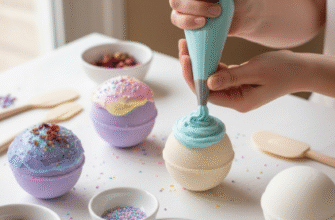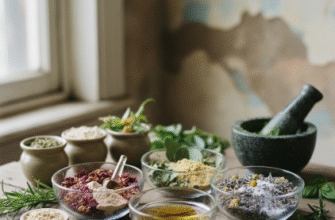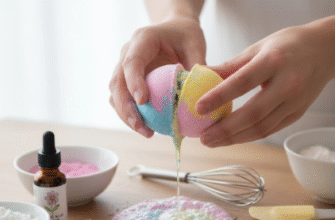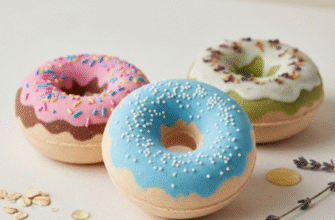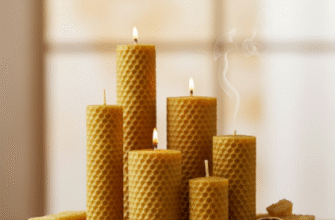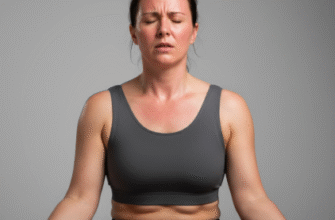Forget just indulging your taste buds; it’s time to treat your skin to the decadent goodness of chocolate. Yes, you read that right. The same treat that brings comfort and joy can also be a powerhouse ingredient in your skincare routine, specifically in the form of a chocolate face mask. This isn’t merely about smearing a melted candy bar on your face (please don’t!), but about harnessing the potent natural properties of cocoa, the raw ingredient behind chocolate, for a truly luxurious and beneficial skin treatment.
The idea might sound a bit extravagant, maybe even messy, but the science behind it points towards significant skin benefits, largely thanks to one key factor: antioxidants. Chocolate, particularly dark chocolate with a high cocoa content, is absolutely packed with these skin-loving compounds. Think of it as a spa day that smells heavenly and works hard beneath the surface.
Unveiling the Antioxidant Powerhouse: Cocoa
So, what exactly are antioxidants, and why are they so crucial for healthy-looking skin? In simple terms, antioxidants are molecules that fight unstable molecules called free radicals. Free radicals are generated by things we encounter every day: UV radiation from the sun, pollution, smoke, and even internal stress. These pesky free radicals damage our skin cells through a process called oxidative stress, leading to visible signs of aging like fine lines, wrinkles, loss of elasticity, and uneven skin tone.
Cocoa is exceptionally rich in a specific group of antioxidants called flavanols and polyphenols. These potent compounds are the true heroes behind the skin benefits of a chocolate mask. Dark chocolate, boasting a cocoa percentage of 70% or higher, contains significantly more of these antioxidants than milk chocolate or white chocolate (which technically contains no cocoa solids).
When applied topically via a face mask, these antioxidants get to work directly on the skin’s surface and upper layers. They help neutralize free radicals before they can cause significant damage. This protective action is vital in maintaining the skin’s structural integrity and youthful appearance. It’s like giving your skin a shield against the daily environmental onslaught.
Beyond Antioxidant Protection: More Skin Perks
While the fight against free radicals is a major draw, the benefits of a well-formulated chocolate mask don’t stop there.
Potential Hydration Boost: Cocoa butter, the natural fat derived from the cocoa bean, is often present in chocolate and is known for its emollient properties. While a mask’s primary function might be antioxidant delivery, the presence of cocoa butter can contribute to softening and hydrating the skin, leaving it feeling supple and moisturized after rinsing. Masks specifically formulated for hydration might emphasize this aspect.
Soothing Sensation: Some components in cocoa have been anecdotally linked to soothing properties. While not a treatment for inflammatory skin conditions, a chocolate mask can offer a calming experience, potentially reducing the look of temporary redness and leaving the skin feeling comfortable and pampered. The rich texture and pleasant aroma certainly add to the overall relaxing effect.
Enhanced Radiance: By helping to protect against damage and potentially offering mild exfoliation (depending on the mask’s formulation, perhaps including finely ground cocoa particles), chocolate masks can contribute to a brighter, more radiant complexion. Removing dulling surface cells and promoting hydration often leads to that coveted healthy glow.
Scientific analysis confirms that cocoa beans are a rich source of flavanols, powerful antioxidants. These compounds demonstrably help combat oxidative stress when consumed. Applied topically in skincare, these antioxidants aim to provide similar protective benefits against environmental factors directly on the skin’s surface, contributing to its overall health and appearance.
Choosing and Using Your Chocolate Treat(ment)
Not all chocolate masks are created equal. Whether you’re venturing into DIY territory or selecting a commercial product, keep these points in mind:
The Importance of Dark Chocolate/High Cocoa Content
As mentioned, the antioxidant power lies in the cocoa solids. Look for masks specifically stating they use dark chocolate or a high percentage of cocoa or cacao powder. Terms like “cacao” often refer to less processed beans, potentially retaining even more nutrients. Avoid masks based on milk chocolate or those high in sugar and milk solids, as these offer minimal antioxidant benefits and could potentially irritate some skin types.
DIY vs. Commercial Masks
DIY Masks: Creating your own mask can be fun and cost-effective. A simple blend might involve high-quality unsweetened cocoa powder mixed with a binder like yogurt, honey, or aloe vera gel. Always use pure, unsweetened cocoa powder (Dutch-processed cocoa has lower antioxidant levels). Research recipes thoroughly and, crucially, perform a patch test on a small area of your inner arm 24 hours before applying to your face to check for any sensitivity or reaction. Ensure all utensils are clean.
Commercial Masks: These offer convenience and sophisticated formulations. Brands often combine cocoa extract with other beneficial ingredients like clays, hyaluronic acid, vitamins, or botanical extracts to target specific skin concerns. Read ingredient lists carefully. Look for cocoa or theobroma cacao high up on the list. Be mindful of added fragrances or potentially irritating ingredients if you have sensitive skin.
Application: The Ritual
Using a chocolate face mask should be a relaxing ritual, not a rushed chore.
- Cleanse Thoroughly: Start with a clean face. Remove all makeup and gently cleanse your skin to allow the mask’s ingredients to penetrate effectively. Pat your skin dry.
- Patch Test (Especially for DIY/New Products): If you haven’t already, perform a patch test. Safety first!
- Apply Evenly: Using clean fingers or a mask brush, apply an even layer of the chocolate mask over your face, avoiding the delicate eye and lip areas. Don’t forget your neck if desired!
- Relax and Indulge: This is the best part! Let the mask sit for the duration recommended on the product packaging or recipe, typically 10-20 minutes. Lie back, enjoy the rich aroma, and let the antioxidants work their magic. Try not to lick it off!
- Rinse Gently: When time’s up, rinse the mask off thoroughly with lukewarm water. You might need a soft washcloth to gently remove all traces, especially with thicker masks. Avoid harsh scrubbing.
- Follow Up: Pat your skin dry gently and follow up with your usual serum, moisturizer, and sunscreen (if it’s daytime).
How Often Can You Indulge?
The frequency depends on the specific mask formulation and your skin type. Generally, using an antioxidant-rich mask like a chocolate one 1-2 times per week is sufficient for most people. Overuse could potentially lead to sensitivity, especially if the mask contains other active ingredients or exfoliants. Listen to your skin; if it feels happy and looks radiant, you’ve found a good rhythm. If you experience any irritation, reduce the frequency or discontinue use.
A Sweet Conclusion for Your Skin
Incorporating a chocolate face mask into your skincare routine is more than just a novelty; it’s a way to deliver potent antioxidant protection directly to your skin in a truly delightful package. By shielding your skin from environmental stressors, these masks can help maintain a youthful, radiant appearance. Whether you opt for a carefully selected commercial product or enjoy a bit of DIY pampering with pure cocoa powder, remember that high cocoa content is key. So go ahead, embrace this delicious-smelling trend and give your skin the antioxidant-rich treat it deserves.

